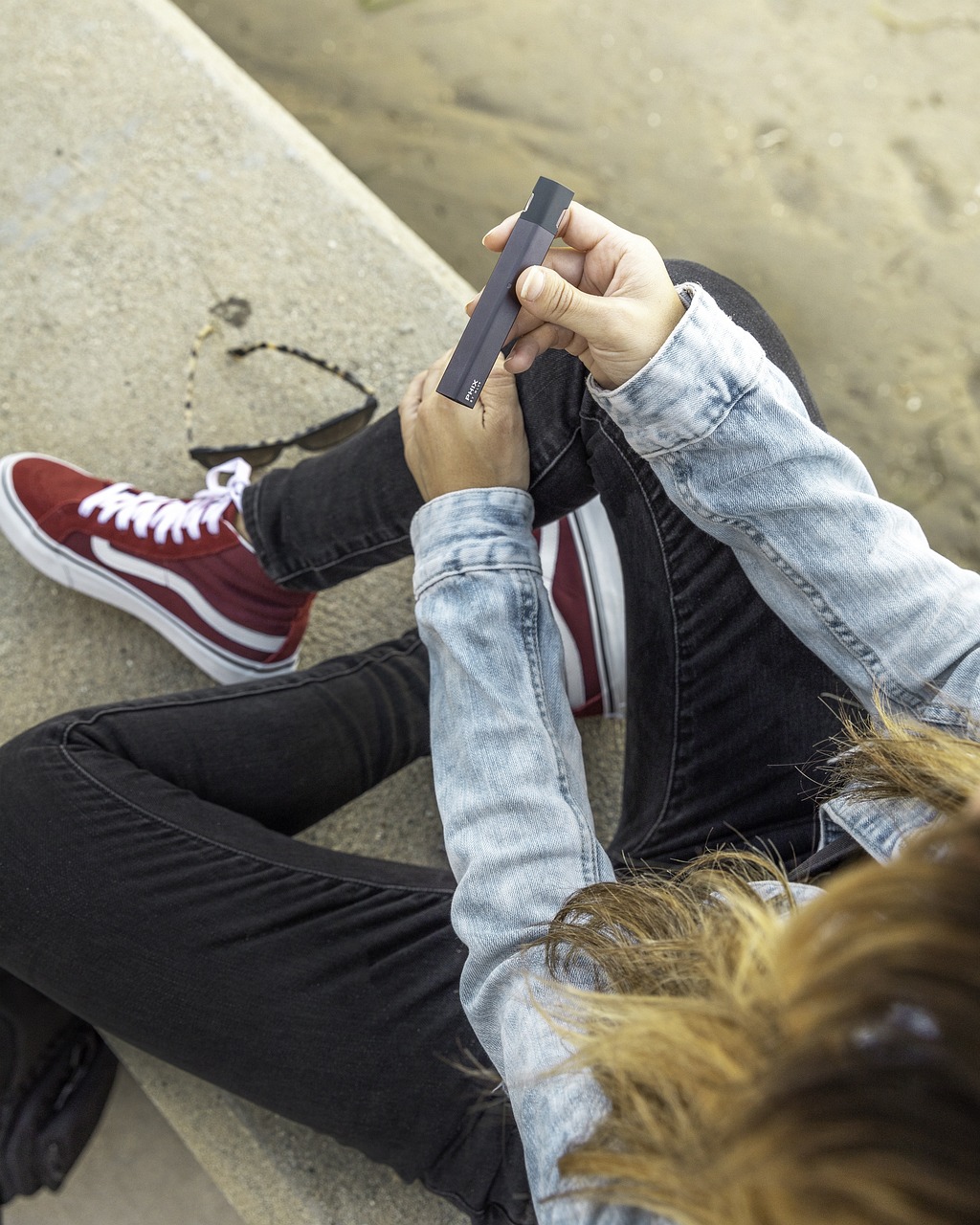can you bring a vape on a plane under 21?
As someone who loves vaping, I’ve often been asked, “Can you bring a vape on a plane if you’re under 21?” It’s a valid query, considering the stringent security measures in place at airports. The answer, however, is not as straightforward as one might think.
TSA regulations allow passengers over 21 to carry a vape on a plane, provided it adheres to the liquids rule. This means the vape must be in a container no larger than 100 milliliters, and all such containers must be in a single clear, quart-sized bag. But what about those under 21? Please stick with me as we delve into the rules and regulations surrounding this issue.
Remember, when considering vaping on a plane, keep in mind that it’s not just about rules and regulations. It’s also about safety. Vaping on a plane can lead to loss of cabin pressure, overheating, and even explosions. Not to mention, it can be disruptive to fellow passengers. So, let’s navigate this foggy issue together.
can you bring a vape on a plane under 21 – Age Restrictions for Bringing a Vape on a Plane

Let’s tackle the age-based question: Can you bring a vape on a plane under 21? Surprisingly, yes! Contrary to the belief that you may need to be of legal smoking age, the TSA typically doesn’t confiscate vaping devices from passengers under 21 years old. It nearly sounds implausible since, in some geographic locations, the minimum legal age for buying vaping products is 21.
Their role is focused more on keeping dangerous materials off planes rather than implementing age restrictions on specific devices or substances. That doesn’t mean that those under the age of 21 are urged to vape. It’s simply a clarification of what TSA guidelines state.
Do remember, that specific airlines may have their restrictions and regulations. For instance, Frontier Airlines only allows e-cigarettes that use disposable cartridges. They forbid refillable tanks or devices utilizing such tanks. You’re also restricted to carrying no more than two batteries for your device.
When it comes to carrying vape liquids, TSA rules come into play again. As per these guidelines, you’re allowed to carry up to 3.4 ounces (approximately 100 milliliters) in your hand luggage. These must be stored in containers holding no more than 2 fluid ounces each. The rules mandate that all these containers must be packed into one clear, quart-sized bag which is then placed inside your carry-on bag.
If your journey includes CBD products, anticipate needing proof that these are not THC products. The similarities between the two can sometimes create confusion, and ultimately, TSA agents have the last word on what can and can’t be brought onto planes.
So, there you have it! While specific guidelines and restrictions can apply, those under 21 are typically able to bring a vape on a plane. As always, remember to check with your specific airline for any additional limitations or regulations they might have. Now, let’s move on to the potential safety considerations of vaping on a plane.
Understanding TSA Regulations for Passengers Over 21
When it comes to vape and air travel, understanding and adhering to TSA safety rules is paramount. These regulations came into play to ensure the safety of all passengers on a flight. They were formulated after the harrowing incidents of 911. Thus, they are strictly upheld with a zero-tolerance policy.
One of the key concerns is that vape devices mustn’t accidentally activate during a flight. Therefore, when carrying vaping devices and the accompanying lithium-ion batteries, due diligence needs to be ensured. These batteries shouldn’t sport a Watthour rating beyond 100Wh. There’s also a strict limitation on the lithium content, which cannot exceed 2g.
It’s crucial to remember that the TSA allows no leniency and is known to open suitcases to inspect any potential threats. While some may perceive it as an invasion of privacy, it’s a significant step towards ensuring flight safety.
So, before you pack your vape gear, make sure you’re well acquainted with TSA vape rules as well as any additional limitation they pose on your luggage. A lack of awareness can land you in a tricky situation, resulting in TSA officers searching your belongings.
Traveling internationally with vape gear presents another layer of complexity. Laws concerning vapes differ from country to country. Therefore, it’s necessary to familiarize yourself with the federal laws pertinent to the countries you’re traveling to and from.
For instance, consider the strict regulation in Thailand: vaping has been outright banned there since 2014. Failure to comply with this federal law can lead to a jail sentence of up to 10 years!
To avoid such predicaments, it’s recommended to research any potential vaping bans at your exposure. As many places globally are turning smoke-free and vape-free, steering clear of assumptions can ensure a smooth-sailing travel experience.
Note, disregard, or ignorance of these regulations is neither a defensible nor responsible action. It’s all about creating a secure and comfortable environment while you’re thousands of feet above the ground.
The Liquids Rule: Container Size and Clear Bag Requirement
Understanding TSA’s liquid regulations can feel daunting, especially if you’re a vaping enthusiast and require your vape juice to tag along. I’m here to break it down for you. Indeed, you can bring vape juice on a plane but, as with all liquids, it’s subject to certain rules.
First and foremost, the container for your e-liquid mustn’t hold more than 3.4 ounces (100 milliliters) per item. Be sure to check your vape juice containers’ size before hitting the airport, as the TSA officers at security checkpoints will keep a keen eye out for this regulation.
Competing for attention with the container size rule is the clear bag requirement. All your eliquid containers must fit snuggly into a single, clear, quart-sized, resealable plastic bag. It helps ensure frictionless security checks by facilitating visual inspection without the need for physical handling.
Only one such bag per passenger is granted passage through the security checkpoints. So, I’d advise you to be frugal while packing your eliquid if you plan to carry it with you.
What if your vape juice exceeds the 3.4-ounce limit or doesn’t fit in a single quart-size bag? Well, let’s just say you’ll have to rule out the carry-on option. Your ‘extra’ vape juice must travel in your checked baggage. But remember, pressure changes during flight can impact certain containers, so appropriate packing is crucial to avoid any mid-flight leakage mishaps.
To make your trip smooth and hassle-free, if you have any concerns or specific questions about these regulations, I encourage you to contact the airline before traveling. Their guidance can save you from potential headaches at the security line or worse.
Can You Bring a Vape on a Plane if You’re Under 21?
Being under 21 and wondering whether you’re allowed to bring your vape on a plane adds another layer of complexity to the already stringent TSA regulations. But don’t worry, I’ve dug deep into the rules and here’s what I’ve found.
To begin, whether you’re under 21 or above does not directly influence TSA’s regulations about carrying vape devices on a plane. TSA does not differentiate based on age when it comes to transporting vaping devices and their components. The same rules apply across the board: vape pens must be packed in carry-on baggage and vape juice needs to be under 3.4 ounces and packed in a clear, quart-sized, resealable plastic bag.
While TSA doesn’t set age restrictions on vaping devices or liquids, specific airlines and specific destinations might have rules of their own. Therefore, it’s always a good idea to check with your airline before you fly. Various state laws and local regulations may also come into play.
For instance, if you’re headed to California, remember that you need to be 21 to legally purchase or use vaping devices or liquids. Each state may have different laws and age limits, varying from 18 to 21.
The FAA on the other hand, prohibits the use of e-cigarettes on planes. So, while you can bring your vape, usage onboard is strictly not permitted.
To reiterate, the age factor does not influence TSA’s vape and battery rules. But be sure to do your homework on local regulations and airline-specific rules to stay out of trouble. After all, it’s always better safe than sorry.
Safety Concerns and Risks of Vaping on a Plane

There’s a clear reason why vaping on a plane is strictly prohibited: it poses both health and safety risks. The inherent nature of vaping devices – their propensity to create an open flame – increases the risk of a fire breaking out.
It’s not just the smoker who’s at risk, even passengers close by could be affected, bringing their traveling journey into a distressing episode. Plus, the smoke from these devices can be disruptive and unpleasant to fellow travelers, infringing on their comfort and peace.
Complying with these rules isn’t simply about avoiding penalties – it’s a matter of ensuring safety. Let’s take a glance at some actual incidents to understand the consequences of not adhering to these rules.
If we look at a news report out of The Independent, a vaping device caused a fire aboard a March 1, 2023, flight. The fire, which was quickly extinguished by a retired firefighter and the flight crew, resulted in 10 passengers needing hospital treatment. The culprit? A battery-powered vape connected to a charging device within a luggage compartment.
According to a report featured in the Wall Street Journal, vaping devices and e-cigarettes are the primary culprits in most lithium battery-related incidents on planes in recent years. The primary takeaway here is that these incidents pose serious risks and underscore the need for the vaping rules aboard flights.
Conclusion
So, can you bring a vape on a plane if you’re under 21? The answer isn’t as straightforward as you might think. It’s crucial to remember that TSA regulations and airline policies must be adhered to, regardless of age. Your vape juice should be in a clear, quart-sized bag and must not exceed 3.4 ounces. If it does, you’ll need to pack it in your checked baggage.
But remember, vaping on a plane is a no-go. It’s not just about being considerate to other passengers, it’s about safety. Vaping devices pose a real fire risk, and there have been incidents where people have been hospitalized as a result. So, before you head to the airport, make sure you’re fully aware of all the rules and regulations. Stay safe and enjoy your flight!





